
Reading to Forget?
I love reading, but why do I forget everything I’ve read within a week? Turns out I’m not alone. Studies show we forget over half of what we read within an hour, and 90% is forgotten after a week! That’s why I started using a simple tool that changed how I read and remember: the Reading Matrix.
It has nothing to do with a guy called Neo! A Reading Matrix is a practical tool that will help you boost retention, make reflection easy, and turn reading into a long-term habit.
The best part? It takes just a few minutes a day.
In this post you’ll:
- Learn how to break down a book into manageable sections.
- Discover simple tips to boost retention using a Reading Matrix.
- Get a ready-to-go Reading Matrix Template you can copy & paste directly from this blogpost.
- Have access to a free PDF Reading Matrix Template customised for fiction books.
Short Summary
A Reading Matrix is a simple tool for busy readers who want to remember more from every book. By adding short reflection prompts before, during, and after reading, it strengthens memory and turns reading into a lasting habit.
- The Struggle of Reading
- What’s a Reading Matrix, and Why it Works
- How to Use My Reading Matrix
- Choose The Format That Fits You
- How to Start Using The Reading Matrix Today
The Struggle of Reading
According to Pew Research, 23% of adults in the U.S. haven’t read a book in the past year. But among those who do read, a common frustration is retention.
Does this sound familiar? You pick up a book, get into a rhythm, and fly through the pages. It feels great, but the next day, you can’t remember a thing. The new chapter makes no sense, and now you’re stuck re-reading or giving up altogether.
As someone who reads for both pleasure and learning, I needed a better way to recall what I read.
That’s when I remembered something I used at university, a Reading Matrix.
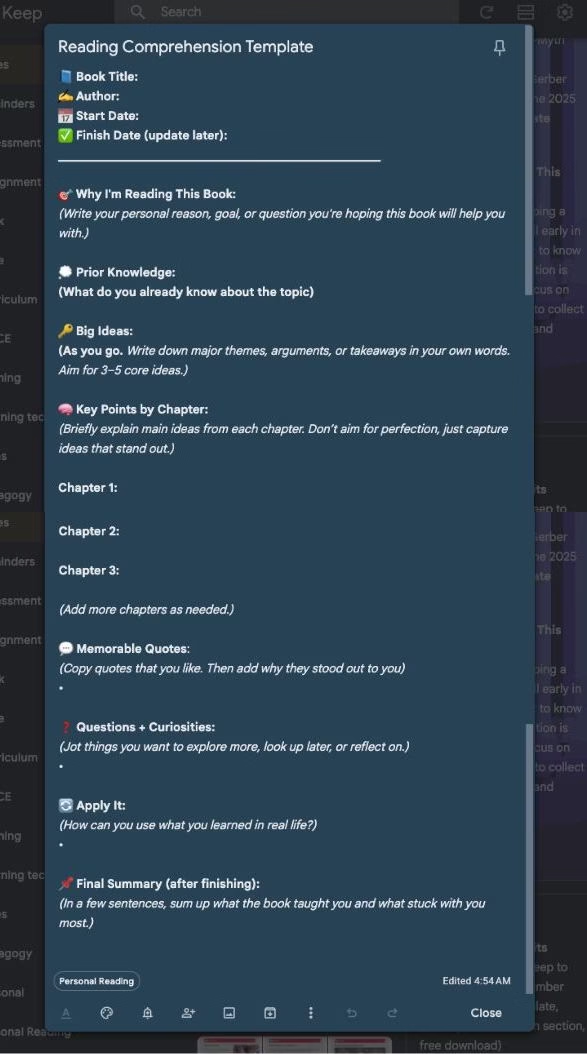
What’s a Reading Matrix, and Why it Works
A Reading Matrix is a one-page template that helps you actively engage with a book. Instead of passively turning pages, it prompts you to think, reflect, and connect.
The version I created takes just a few minutes at the end of each session, perfect for busy readers who want to get more out of their time.
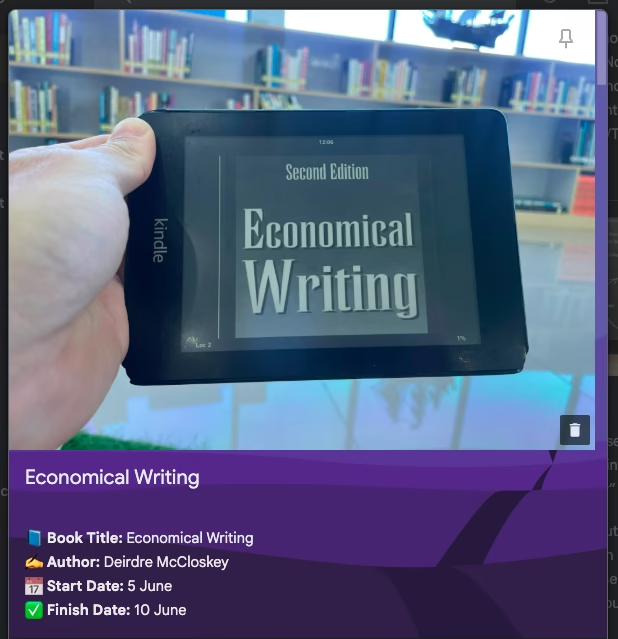
You might think all your reading time should be spent reading. But pausing for 5 minutes to fill in a few prompts can make a big difference in what you remember and how well you apply the information.
Of course, a Reading Matrix isn’t the only way to remember more of what you read. These 9 Reading Tips show you how to build daily habits that make books stick.
Now that you know what it is, let’s break it down step by step so you can try it with your next book.
How to Use My Reading Matrix
The Reading Matrix breaks your reading into three stages–before, during, and after–so you remember more and get more value from each page.
Before You Start Reading the Book
Why I’m Reading This Book

Set a goal before you open the first page. Reading with intention helps your brain focus and absorb. Your reason doesn’t have to be deep, just something personal to you:
- I want to write more clearly for my blog.
- I need to find a morning routine that gives me energy.
- I’d like to understand this topic better so I can talk about it confidently with my partner.
Even fiction deserves a goal:
- I want something to do during my lunch breaks at work.
- I want to relax without reaching for my phone.
When you know why you’re reading, you’re more likely to notice the insights that matter most. Remind yourself of your goal each time you pick up the book.
Prior Knowledge

Think of this as a warm-up for your brain. Just like stretching before a run, you’re preparing your mind for what’s to come.
Try this:
- Write down anything you already know about the topic. Anything!
- Watch a 10-minute YouTube summary of the book to give yourself context.
- Write a few bullet points to activate your memory.
The more connections you make between old and new knowledge, the more likely you are to retain what you read.
Once you’ve set your intention and warmed up, it’s time to dive into the book.
While Reading the book:
Big Ideas

These are the core messages the author wants you to walk away with. If something gets repeated a few times, it’s probably important.
Think of it as the elevator pitch for the book. If you had to explain it in a few sentences, this is what you’d tell them.
Aim for 3-5 big ideas and add to the list as you read.
Key Points by Chapter
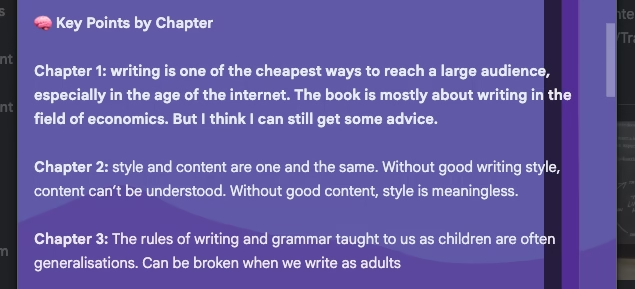
After each chapter:
- Write a short summary
- Note down a few points you want to remember
Resist the urge to stop mid-chapter. Wait until the end. This helps you recall instead of copy, which strengthens memory.
Memorable Quotes
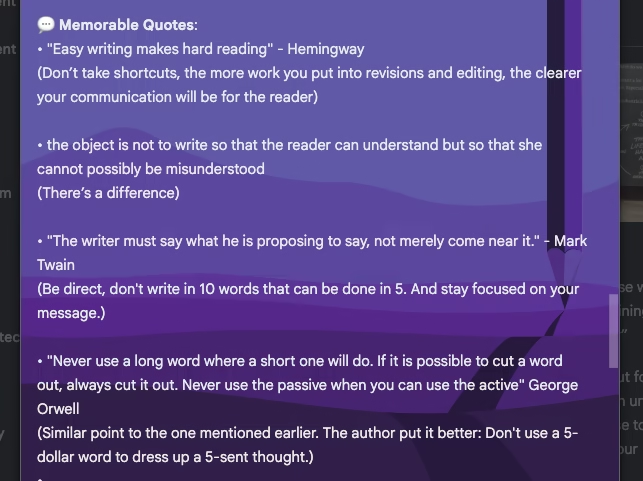
Some lines in a book hit harder than others. Save them:
- Highlight or mark the pages as you go.
- After reading, jot the quote down.
- Then take a moment to add: Why did this speak to me?
Copying the quote alone will make it easy to forget. Rewrite the quote in your own words and explain what it means to you. This makes it memorable.
Questions & Curiosities

A good book raises good questions. Write down your questions about:
- Topics you are unsure of.
- A new interest or curiosity.
- A topic for future exploration.
These make great follow-up reads or discussion points. Make sure you write them as questions for context when you look back later.
Apply It
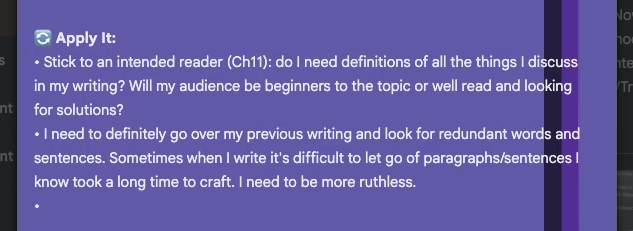
This section is where you put the lessons into action. Ask yourself:
- How can I use this idea tomorrow?
- What action could I take or habit could I change?
Be specific. The more personal your answer, the better your memory will hold onto it, and act on it.
Finishing the last page doesn’t mean the learning stops. The final step is where it all comes together.
After Finishing the Book:
Final Summary
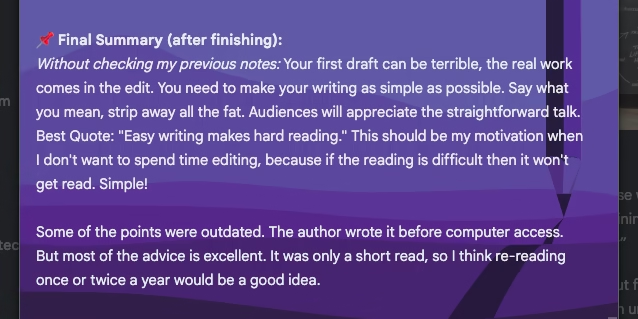
Wait a day or two, then write a short summary from memory:
- What lessons did you learn?
- What stuck with you?
- What would you tell a friend about this book?
This cements the ideas, and helps you notice what truly mattered.
Of course, none of this works unless it becomes a habit. That’s why picking the right format matters.
Choose The Format That Fits You
I use Google Keep because it’s simple and syncs across devices. I have a template stored in the app that I copy when starting a new book.
Check out how I also use Google Keep to lower my screen time and pick up more books.
But the Reading Matrix works anywhere:
- Apple Notes
- Excel or Google Sheets (great for comparing books)
- A notebook or journal
- Post-it notes
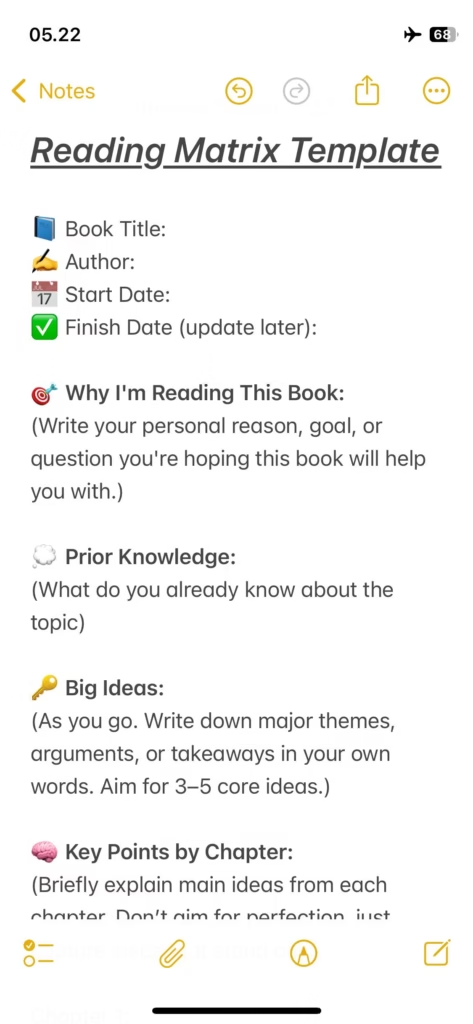
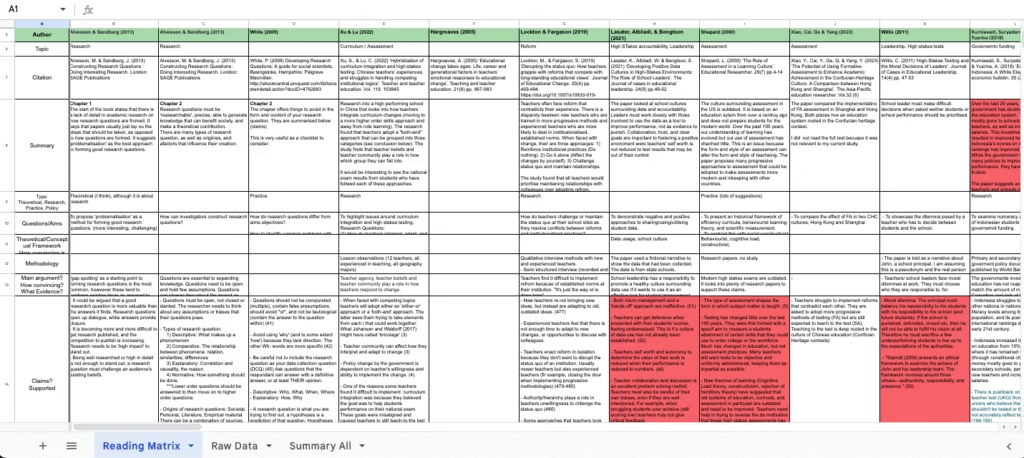

Choose the one you’ll actually use. I’ve even turned books into lesson plans for my students. It helped me understand the content on a deeper level.
Tip: If you’re using your phone for notes, turn on Airplane Mode. It stops distractions and keeps your focus on the book. Find out how automating Airplane Mode can improve your reading time.
Want to go further? Pair this Matrix with Carnegie’s 9 Reading Tips and you’ll have a complete system for remembering, applying, and living what you read
You’re almost there! Here’s everything you need to start using the Reading Matrix right away.
How to Start Using The Reading Matrix Today
If you’re going to spend time reading, make it count.
The Reading Matrix helps you remember what you read, apply it to your life, and get more value from every book. All without needing more time.
Turn it into a habit. You’ll be surprised how much you retain and how clearly you start to think.
Ready to try it? Copy and paste the template into your chosen app, journal, or reading log. Then pick your next book and start reading!
Reading Matrix Template
📘 Book Title:
✍️ Author:
📅 Start Date:
✅ Finish Date: (update later)
🎯 Why I’m Reading This Book:
(Write your personal reason, goal, or question you’re hoping this book will help you with.)
💭 Prior Knowledge:
(What do you already know about the topic)
🔑 Big Ideas:
(As you go. Write down major themes, arguments, or takeaways in your own words. Aim for 3–5 core ideas.)
🧠 Key Points by Chapter:
(Briefly explain the main ideas from each chapter. Don’t aim for perfection, just capture ideas that stand out.)
Chapter 1:
Chapter 2:
Chapter 3:
Chapter 4:
Chapter 5:
Chapter 6:
Chapter 7:
Chapter 8:
Chapter 9:
Chapter 10:
(Add more chapters as needed.)
💬 Memorable Quotes:
(Copy quotes that you like. Then add why they stood out to you)
•
•
•
❓ Questions + Curiosities:
(Note things you want to explore more, look up later, or reflect on.)
•
•
•
🔄 Apply It:
(How can you use what you learned in real life?)
•
•
•
📌 Final Summary (after finishing):
(In a few sentences, sum up what the book taught you and what stuck with you most.)
If fiction is your thing, not to worry! I have also created the perfect Fiction Matrix Templates for you to copy & paste.
Includes a custom Fiction Matrix Template for fiction readers of different needs.
Now you can track character arcs, emotional beats, favourite moments, and more. Try the two versions to see how deep you want to dive into your books.
Whether you’re reading to learn or to escape, there’s a version that fits your style.
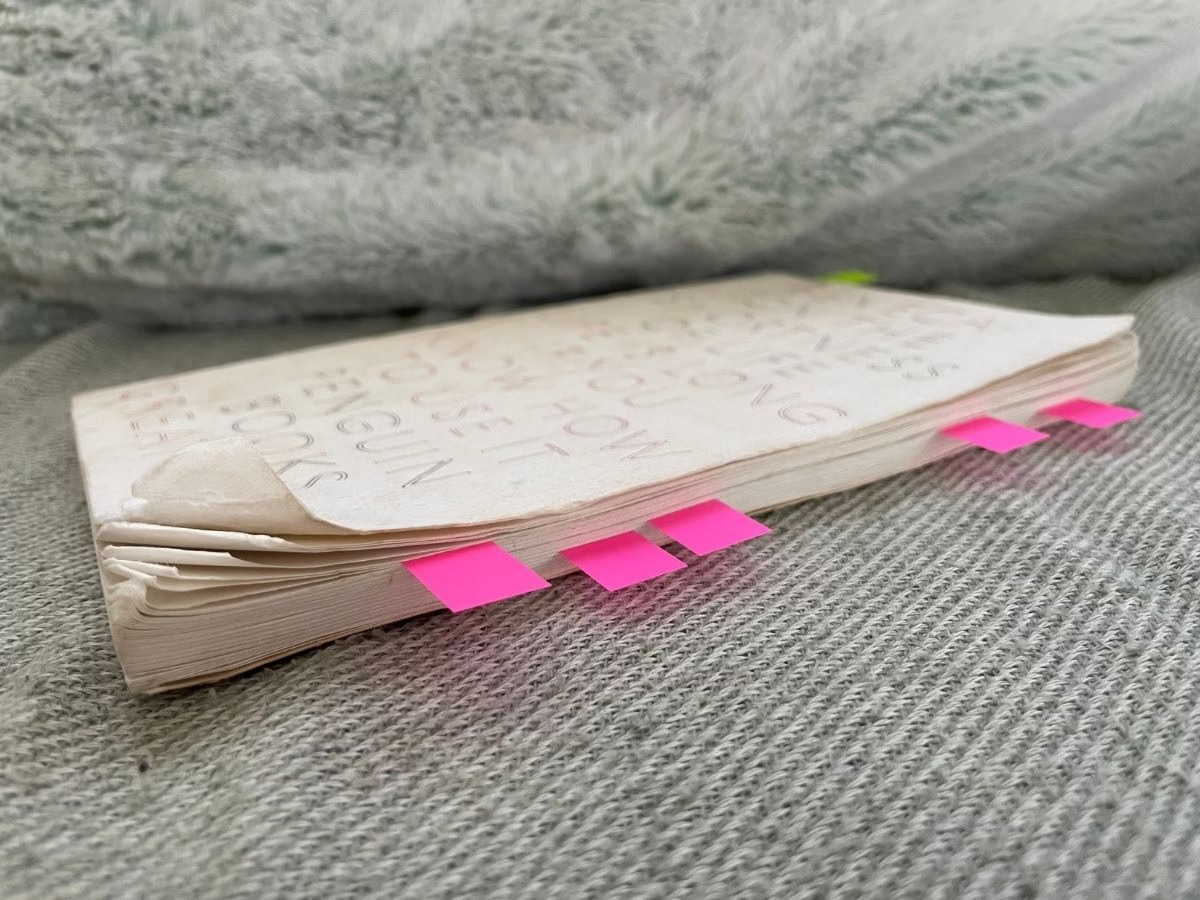
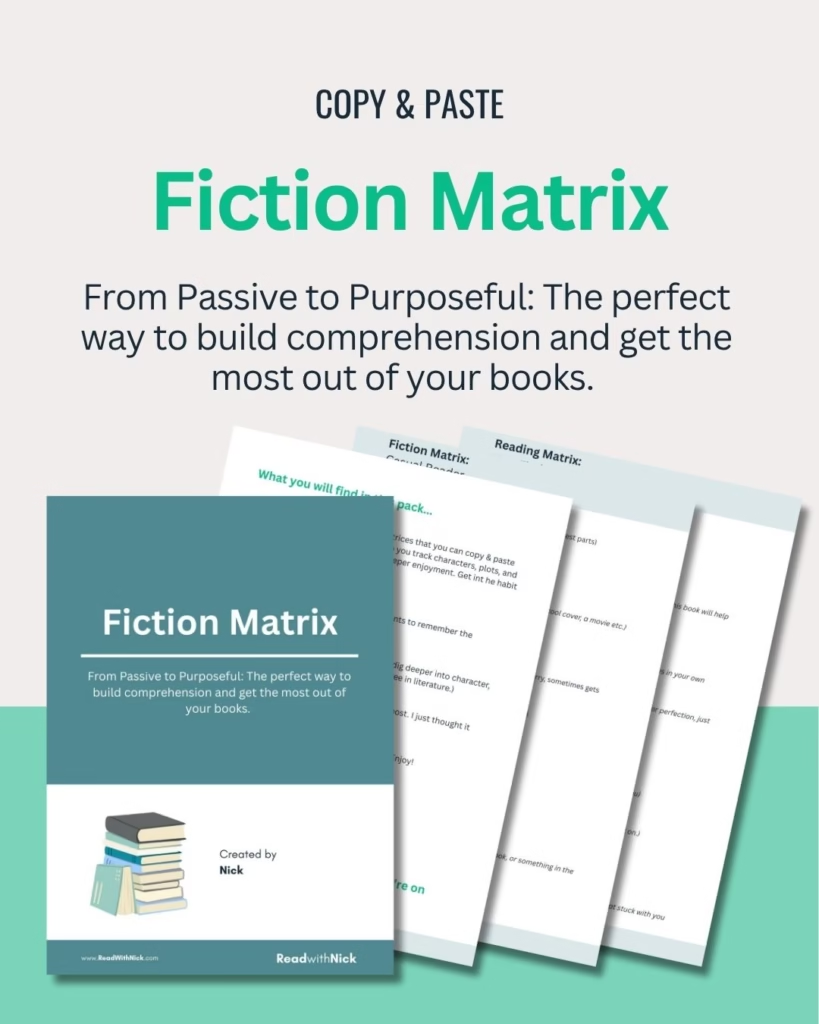
Leave a Reply